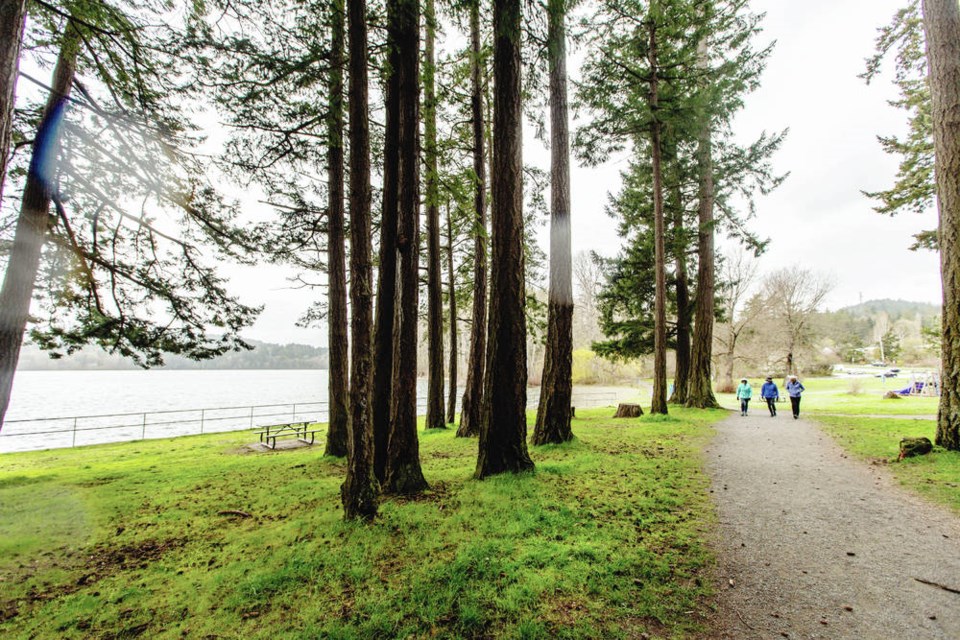The province is chipping in half the cost for an aerator system to make the waters of Elk and Beaver lakes cleaner and safer for humans and pets.
B.C. is contributing $750,000 towards an oxygenation system, expected to be operating in spring 2022.
The goal is for the system to curb the increasingly frequent outbreaks of blue-green algae in the popular regional park, which last year attracted 1.7 million visitors.
High amounts of phosphorus in the water have led to the algae blooms and to the growth of invasive Eurasian milfoil, particularly in the shallow channels that connect the two lakes.
Analysis of the lakes and surrounding area point to two sources of phosphorus. It develops within the lakes when there is low turnover of water, and it also flows in from outside sources such as farming.
The blooms curtail use of the lakes, which are popular with swimmers, rowers and anglers, since cyanobacteria in algae can cause health problems if ingested.
“These lakes are a part of our community, and this effort will help make these waters clean, safe and enjoyable for everyone,” Lana Popham, Minister of Agriculture, Food and Fisheries and MLA for Saanich South, said in a statement this week.
The Capital Regional District is seeking consultants with expertise to evaluate a master plan developed to improve the lakes’ water quality, and to help design and implement it.
The entire program is expected to cost $1.4 million.
The plan would see a“high efficiency hypolimnetic oxygenation” system installed to send 1.150 kilograms of oxygen per day into the lower layer of Elk Lake.
The system would maintain “adequate deep-water dissolved oxygen levels important for aquatic life and necessary for reducing release of phosphorus from sediments that contribute to internal nutrient loading,” a CRD report says.
Nutrients have accumulated over decades in the lake and bottom sediments and are recycled back into the water column when oxygen levels are low.
In shallower Beaver Lake, a “de-stratification system to promote mixing and turnover in the smaller water body is recommended.” This simpler aeration system would cost about $40,000.
The park’s milfoil weed harvester runs on Elk and Beaver lakes four days a week between June and October, said Christiana Jones, CRD park’s communicator.
It is used about 70 days per year and pulls out three to four loads of weeds daily. The quantity per load can vary depending on water conditions and the rate of weed growth, she said.
When it comes to tackling the issue of nutrients entering the lakes via the nearby area, CRD staff plan to start this fall on a watershed management program, she said.
They’re expected to work with community stewardship groups to provide residents around the park with education materials to help prevent nutrients and pollution from flowing into the lake.
The CRD is also putting on workshops for homeowners with septic systems in the area.
It will offer homeowners with septic systems a maintenance assessment program to have their systems checked by a certified wastewater professional.



